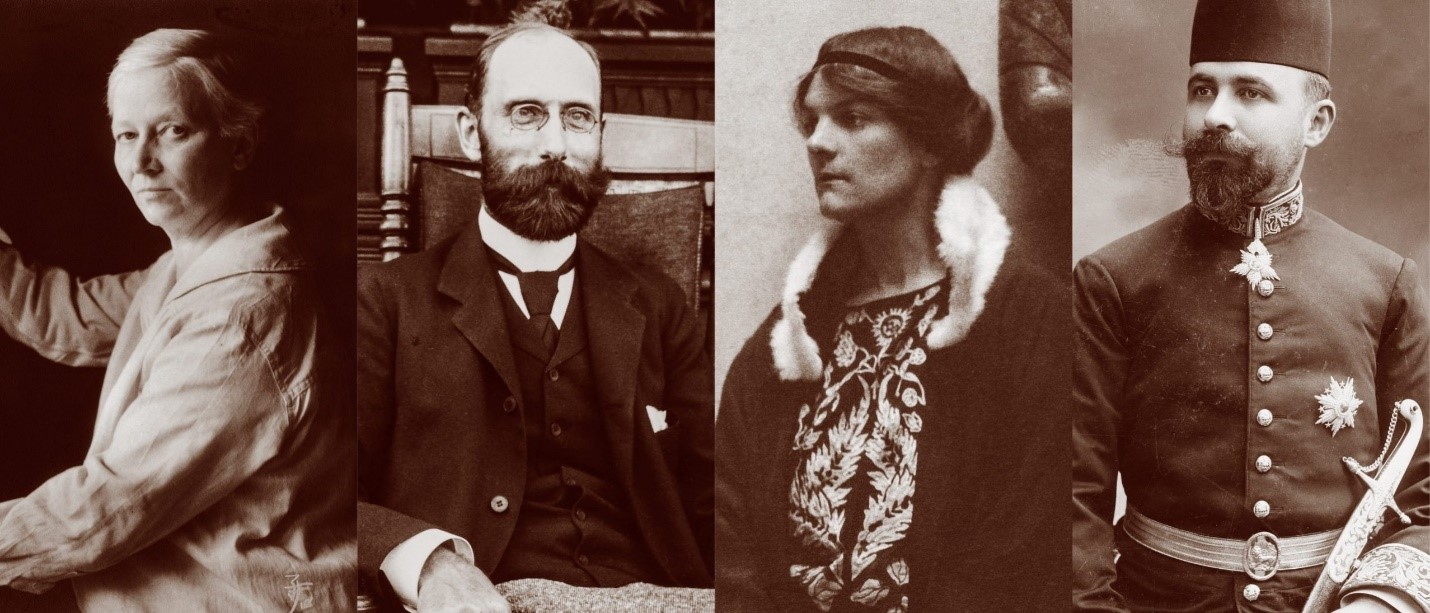Smithsonian’s National Museum of Asian Art Announces “Freer’s Global Network: Artists, Collectors, and Dealers”
The National Museum of Asian Art will present “Freer’s Global Network: Artists, Collectors, and Dealers,” a groundbreaking exhibition that shines new light on the Freer Gallery of Art’s founder Charles Lang Freer. The exhibition opens Oct. 15—near the start of the museum’s centennial celebrations—and is ongoing. An innovative digital feature makes the exhibition accessible to global audiences. As the National Museum of Asian Art charts its next 100 years, “Freer’s Global Network” offers an opportunity to reflect on the past.
“Freer’s Global Network” looks closely at the interconnected web of artists, dealers and collectors who helped shape the Freer Gallery of Art’s collection amid the shifting political and economic environment of the early 20th century. The exhibition and its accompanying digital media are part of the museum’s work to uncover and amplify the many voices and perspectives that formed the museum.
The hybrid onsite and online exhibition highlights often-unseen elements of art history and museum practice, including provenance research, which documents the ownership of objects in the museum’s collection. The accompanying digital StoryMap allows visitors to explore the stories of four individuals, Bunko Matsuki, Dikran Kelekian, Mary Chase Perry Stratton and Yamanaka Sadajirō, each of whom played a major role in shaping the collection that Freer bequeathed to the nation.
“The National Museum of Asian Art has been a leader in provenance research for many years,” said Chase F. Robinson, Dame Jillian Sackler Director of the Arthur M. Sackler Gallery and Freer Gallery of Art, the National Museum of Asian Art. “Especially as we move into our second century, we are committed to presenting the history of our objects in innovative ways.”
The 22 objects displayed in “Freer’s Global Network,” including American paintings and stoneware, Japanese ceramics, ancient Chinese bronzes and Near Eastern pottery, illustrate Freer’s network in operation. The exhibition is deeply informed by both archival material and ongoing scholarship on Freer and his time.
“It’s such a pleasure to put Freer in the larger context of his moment and to highlight individuals such as Agnes Meyer and Mary Chase Perry Stratton, women whose taste and artistic talent shaped Freer’s collecting in foundational ways,” said Diana Greenwold, Lunder Curator of American Art.
“Just as ‘Freer’s Global Network’ celebrates the many figures who shaped the institution’s art collection, the exhibition itself was not conceived as a singular vision,” said Katherine Roeder, guest curator. “Rather it was a collective project that brought together colleagues from different departments within the museum.”
About the Smithsonian’s National Museum of Asian Art
The Smithsonian’s National Museum of Asian Art is committed to preserving, exhibiting, researching and interpreting art in ways that deepen people’s collective understanding of Asia and the world. Home to more than 45,000 objects, the museum stewards one of North America’s largest and most comprehensive collections of Asian art, with works dating from antiquity to the present from China, Japan, Korea, South Asia, Southeast Asia and the Islamic world. Its rich holdings bring the arts of Asia into direct dialogue with an important collection of 19th- and early 20th-century American works, providing an essential platform for creative collaboration and cultural exchange between the United States, Asia and the Middle East.
Beginning with a 1906 gift that paved the way for the museum’s opening in 1923, the National Museum of Asian Art is a leading resource for visitors, students and scholars in the United States and internationally. Its galleries, laboratories, archives and library are located on the National Mall in Washington, D.C., and are part of the world’s largest museum complex, which typically reports more than 27 million visits each year. The museum is free and open to the public 364 days a year, making its exhibitions, programs, learning opportunities and digital initiatives accessible to global audiences.
# # #
SI-298-2022

